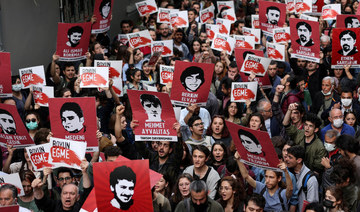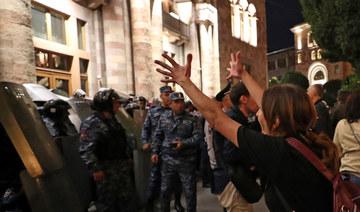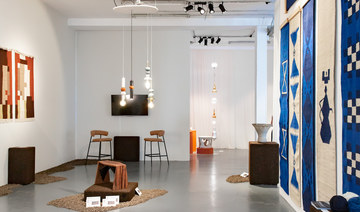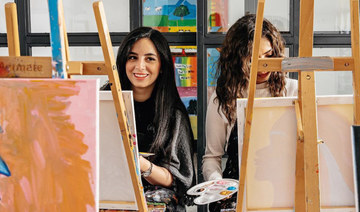ANKARA: An international film festival in Turkiye has been canceled after controversy over a documentary about judicial purges that followed an attempted coup in 2016, authorities said Friday.
The dispute centers on “The Decree,” a documentary about the plight of a doctor and a teacher affected by Turkish President Recep Tayyip Erdogan’s sweeping crackdown after he survived the failed military coup.
The film was initially selected for Antalya’s “Golden Orange” film festival, but excluded from the competition last week, prompting an outcry from filmmakers who condemned the move as censorship.
The festival’s jury members threatened to pull out if the film was not readmitted and said they “reject the approach that looks for incriminating elements in a film and the normalization of censorship.”
The organizers gave in and reinstated the film, but it was excluded again after the culture ministry waded in.
“I regret to inform film lovers that we have canceled our festival, which was set to take place between October 7-14, due to external developments,” the mayor of Antalya said in footage shared on social media.
The Ministry of Culture withdrew its support for the festival, calling it propaganda for the preacher Fethullah Gulen, who Ankara accuses of being behind the coup attempt in 2016.
Turkish film festival canceled over censorship controversy
https://arab.news/9xmya
Turkish film festival canceled over censorship controversy
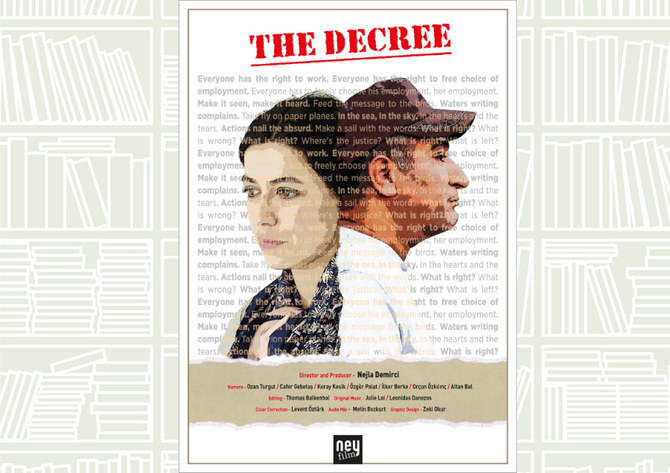
- The Ministry of Culture banned the documentary "The Decree", calling it propaganda for the preacher Fethullah Gulen, who Ankara accuses of being behind the coup attempt in 2016
Opposites attract as artists explore beauty in Diriyah exhibition

- The exhibition is curated by Khayria Refaat, who said in a statement: “This exhibition exemplifies the power of artistic collaboration and the ability of artists to create profound narratives
RIYADH: In Shashai Studio’s latest exhibition, “Delicacy of Dualities,” seven artists and one creative studio from the Kingdom explore the theme “intricate dance of opposites”.
The exhibition in Diriyah’s Jax District showcases a series of thought provoking artworks and installations from artists Nada Al-Ali, Maan Alabbadi, Nouf Alsharif, Rasha Saddiq, Abdullah Al-Bugami, Eida Alzahrani, Ahmad Haddad, and Makhtut Studio.
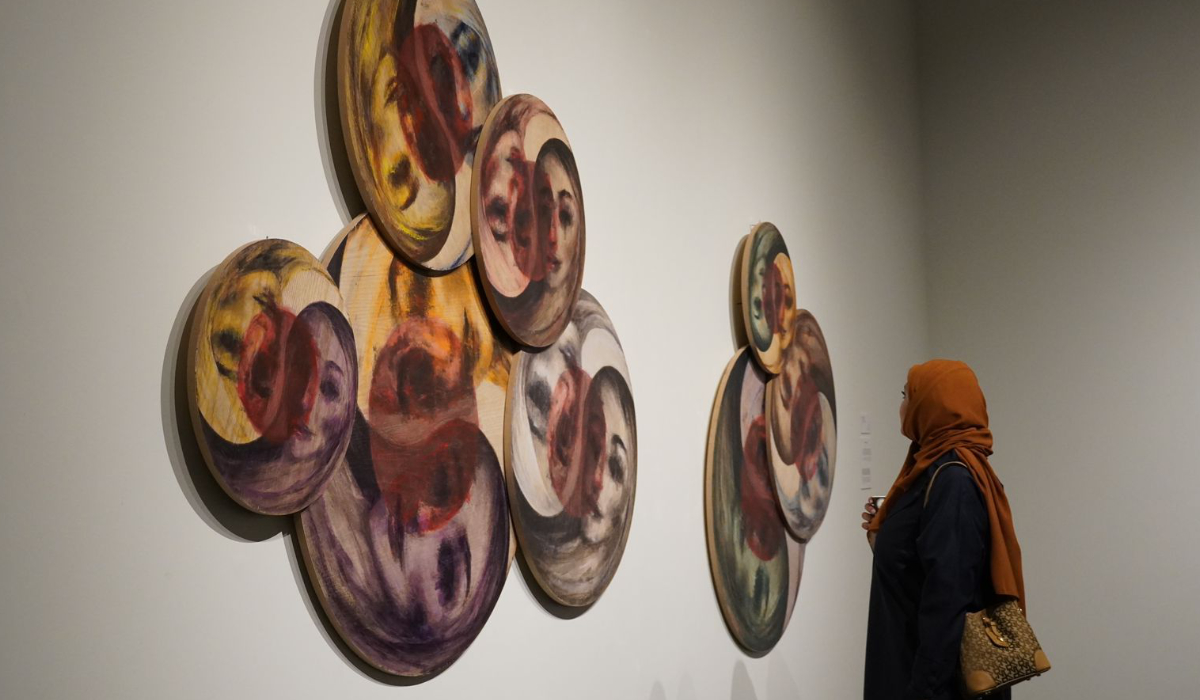
Each artist tells a profound and personal story, including Al-Bugami, who dedicated his three artworks to the powerful duality of woman and man.
In some traditional and conservative societies, such as parts of Saudi Arabia, some women may choose to wear the burqa, a cultural garment that covers the entire body and includes a mesh screen to cover the face.
This exhibition exemplifies the power of artistic collaboration and the ability of artists to create profound narratives.
Khayria Refaat, Curator
Women who practice this tradition choose to cover themselves in front of everyone, including their husband and family members.
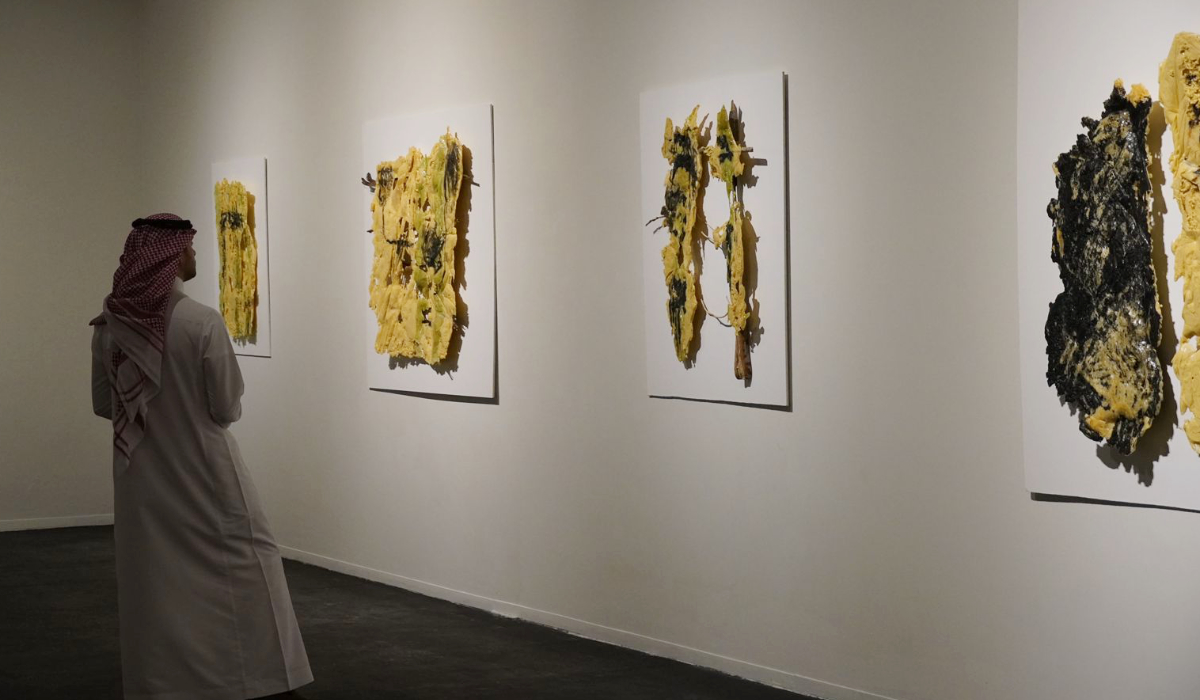
“The burqa is considered the identity of the badu woman. Some people may see it as something that is quiet or sad, because it is black, but I decided to portray my aunt, who is in her 70s and I have never seen her face,” he said.
“One time, I accidentally saw her face and I could not recognize her. But, with that being said, behind the covering, when I greet her, I feel a deep and profound sense of love and belonging.”
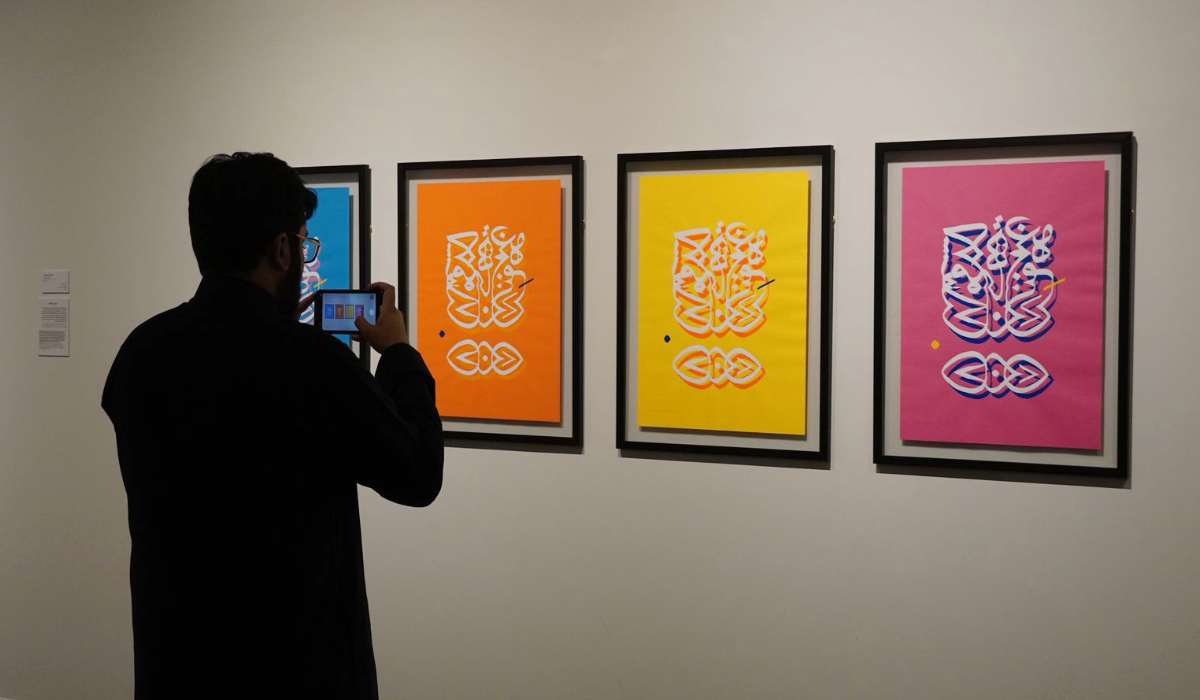
One of Al-Bugami’s artworks is handwoven using the sadu sewing technique, an ancient skill made famous by Saudi women in the north of the Kingdom. It is characterized by its bright colors and intricate weaving, and is registered on UNESCO’s list of intangible cultural heritage.
Sadu is usually performed by women, but Al-Bugami chose it as his medium to portray the sense of woman in his work.
“The pattern in the middle is an old design used in the past, and I decided to depict this pattern as if it resembles a woman. I decided to put the design in the middle because she is the foundation of the home; she is the most important part. I could not put the design in a corner, otherwise the home won’t be balanced.”
Al-Bugami has worked on a series of artworks that reflect his views on the vital role of women in life.
“For a while I have been working on a concept that depicts things within humanity that complete one another, such as the man and woman, life and death, Adam and Eve ... I have worked on this project using charcoal, acrylic, and sadu.
“Life is man and woman; what would a man do without a woman and what would a woman do without a man? You can’t have one thing without the other. We have to have the duality of both, like night and day.”
The exhibition is curated by Khayria Refaat, who said in a statement: “This exhibition exemplifies the power of artistic collaboration and the ability of artists to create profound narratives. ‘Delicacy of Dualities’ invites viewers to question and explore the boundaries of perception while discovering the hidden beauty within the dance of opposites.”
Saudi Film Festival ends with honors for best production, music, acting
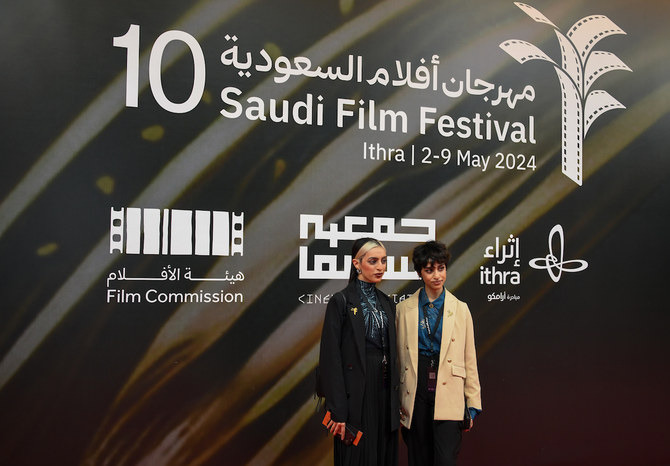
- Kingdom’s acclaimed wildlife documentary ‘Horizon’ and film ‘Hajjan’ win top awards
DHAHRAN: The red carpet was rolled out on the final night of the eight-day 10th Saudi Film Festival on Thursday with awards handed out for best production, music and acting.
The event, held at King Abdulaziz Center for World Culture, or Ithra, had included masterclasses, workshops, book signings and networking opportunities.

The closing ceremony was a glamorous event, as presenters handed out the Golden Palm awards on stage.
Of the 76 films that were screened, 53 titles competed for 36 awards.

The acclaimed 2024 wildlife documentary “Horizon” won in its category. It was produced by the Konoz Initiative in collaboration with the Ministry of Media’s Center for Government Communication and the National Center for Wildlife.
Ithra’s own award-winning “Hajjan,” about a young camel rider, won for best music, best actor for the young star Omar Alatawi, and best actress for Tulin Essam. The film also won the Jury Golden Palm.

One of the big winners on the night was the documentary shown at the opening ceremony of the festival on May 2, “Underground,” about the music scene in Saudi Arabia.
The list of winners and the recorded stream are available on the Ithra website.
Highlights from the Middle East Institute’s ‘Louder Than Hearts’ in Washington DC
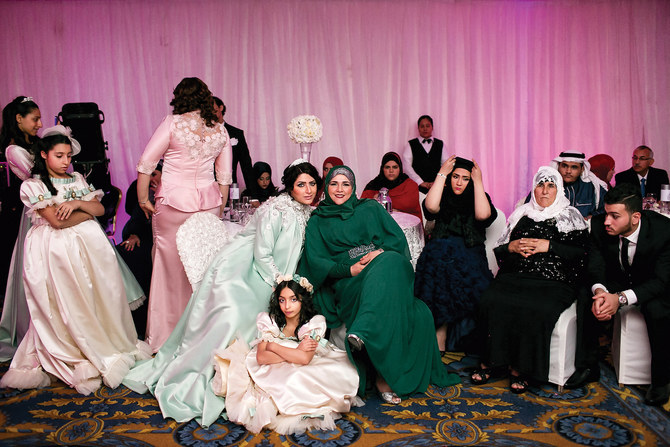
DUBAI: The Middle East Institute in Washington DC is hosting works by female photographers from the Arab world.
Tasneem Al-Sultan
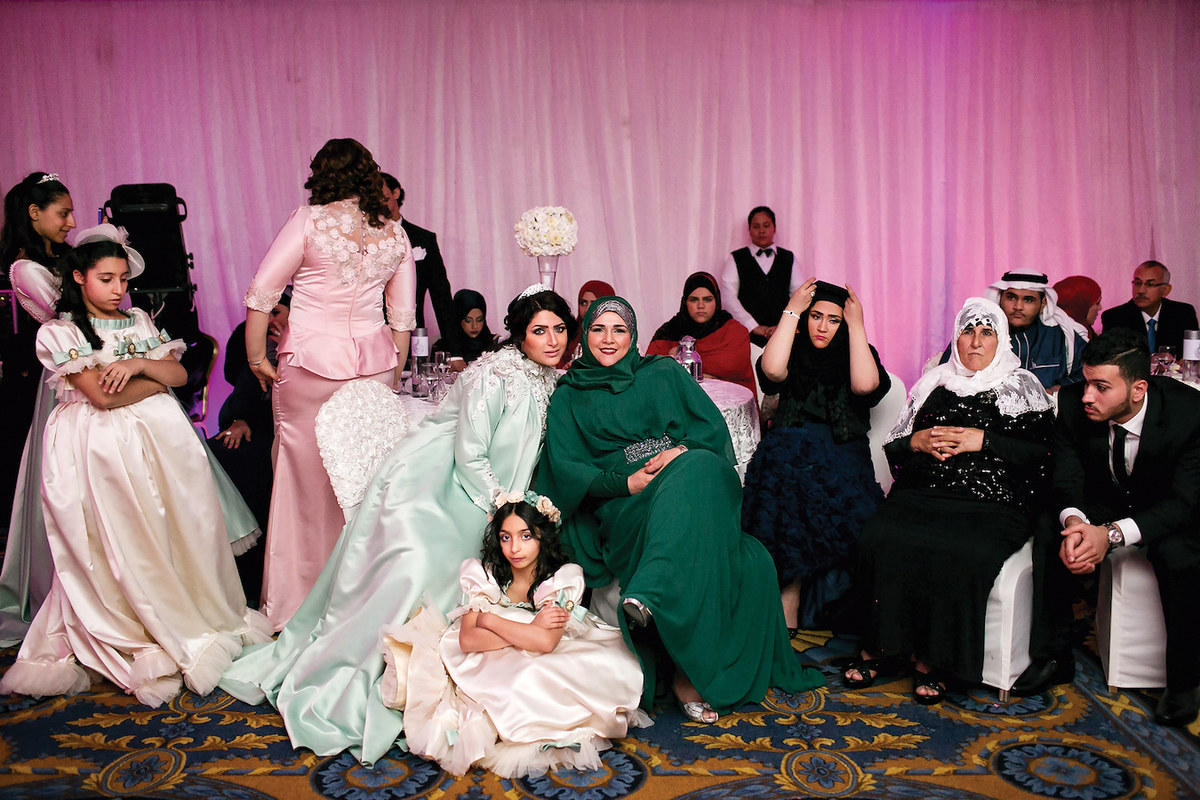
‘Diversity Within Saudi Weddings’
The acclaimed Lebanon-born Palestinian-American photographer Rania Matar has curated “Louder Than Hearts,” an exhibition of work by 10 female photographers, including herself, from the Arab world and Iran that runs at the Middle East Institute in Washington DC until October 4. Saudi Arabia is represented by Riyadh-based “visual storyteller and photographer” Tasneem Al-Sultan, specifically her “Saudi Tales of Love” series, which, the MEI says, is “informed by her personal journey through marriage and divorce.”
In wedding images such as this one, Al-Sultan “depicts the constructs and expectations of marriage, including the elaborate ceremonies, as well as the various societal constraints the Saudi women she photographed faced and triumphed over” and “delves into the complexities of relationships and the interplay of tradition and individual choice.”
The series has garnered global recognition for Al-Sultan, featuring in Time’s “Lightbox” photo series and the international photography fair Paris Photo.
Rania Matar

‘Farah (In Her Burnt Car)’
Matar’s photography, the MEI states, “captures intimate moments that transcend borders and cultures and explores themes of personal and collective identity through photos of women in the US and the Middle East.”
The series to which this image belongs — “Where Do I Go? Fifty Years Later” — began after the devastating explosion in Beirut Port in August 2020, and the title alludes to the fact that 2025 will be the 50th anniversary of the beginning of Lebanon’s civil war. The wave of emigration that followed the 2020 explosion was “akin to that of 1984-85 when a wave of young people including herself left the war-stricken country. By photographing these women, Matar was relating to their experiences and their dilemma of immigration (decades) later.”
Rehaf Al-Batniji

‘Malak’
This image comes from Paris-based, Gaza-born photographer Al-Batniji’s series titled “(Shatt) The Beach & (Shatta) The Chili Pepper,” a project that explores “the social and cultural anthropology” of her hometown. Shatta is a major ingredient in Palestinian cuisine, and “emblematic of Gaza, where life’s challenges can sting like this fiery spice,” while shatt is “the serene beach where residents seek solace and escape their daily reality.”
Al-Batniji’s work, the MEI states, “offers an intimate portrayal of the territory, reflecting the struggles and intensity of life under siege, as well as the resilience and vibrancy of its communities with refreshing hopefulness. Al-Batniji rejects the brutal imagery of conflict and instead uses color as a tool of resistance.”
Carmen Yahchouchi

‘Victoria’
Mali-born Lebanese photographer Yahchouchi has work from three of her series in the exhibition, all of which “capture the enduring impact of the Lebanese Civil War on women, highlighting their pivotal roles in the middle of chaos and devastation,” the MEI’s promotional material states. “Her work offers glimpses into their resilience, strength and sacrifice as they navigated through tumultuous periods of history emerging as heroines within their communities and families and assuming new roles in the public sphere.” This piece is from her series “My Mother’s Gun,” and demonstrates Yahchouchi’s talent for photographing “the intimate spaces of human experience, inviting viewers into her subjects' unique worlds.”
Tanya Habjouqa

‘Inner Resistance’
The Jordanian photographer and journalist, who lives and works in East Jerusalem, “melds a mordant sense of irony with an unyielding examination of the repercussions of geopolitical conflicts on people’s lives,” according to the MEI. This image comes from her “Occupied Pleasures” series, which, the institute says, “presents a multidimensional portrayal of humanity’s ability to find joy amid adversity in the West Bank, Jerusalem, and Gaza, utilizing a sharp sense of humor about the absurdities produced by a 47-year occupation.”
Artist Dalya Moumina: ‘Jeddah is always going to be home to me’
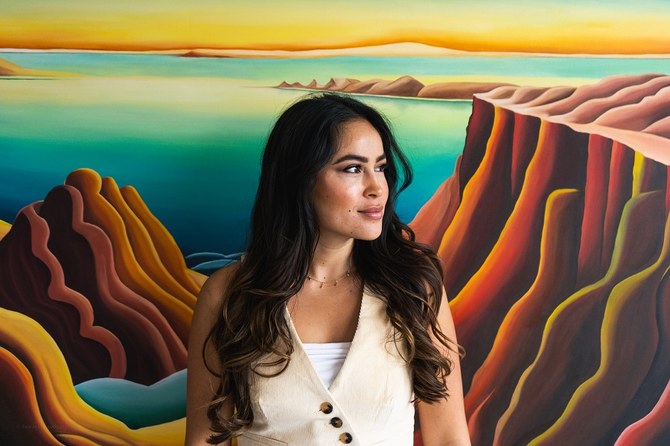
- The NYC-based Saudi-Filipina artist discusses growing up in the Kingdom and how her cultural background has influenced her work
DUBAI: Dalya Moumina is an emerging New York-based artist whose imaginative landscape paintings partially pay tribute to her Arab and Asian heritage. She was born in Washington DC in 1996 to a Saudi-Palestinian father and a Filipina mother. Both were travel lovers, who luckily happened to have met each other on a flight. When Moumina was three years old, her family relocated to Saudi Arabia.
“Jeddah is always going to be home to me. Whenever I go back, it feels like I never left,” Moumina tells Arab News. “Growing up there was very adventurous. I lived the Jeddah lifestyle, right on the Red Sea, which was the best childhood to be honest. I’d go to the beach almost every weekend and we would do desert trips and hiking. I was also a professional horseback rider. I think the part of Jeddah that most influences me is definitely the water. The Red Sea is, in my opinion, the most beautiful sea out there. It’s so blue.”
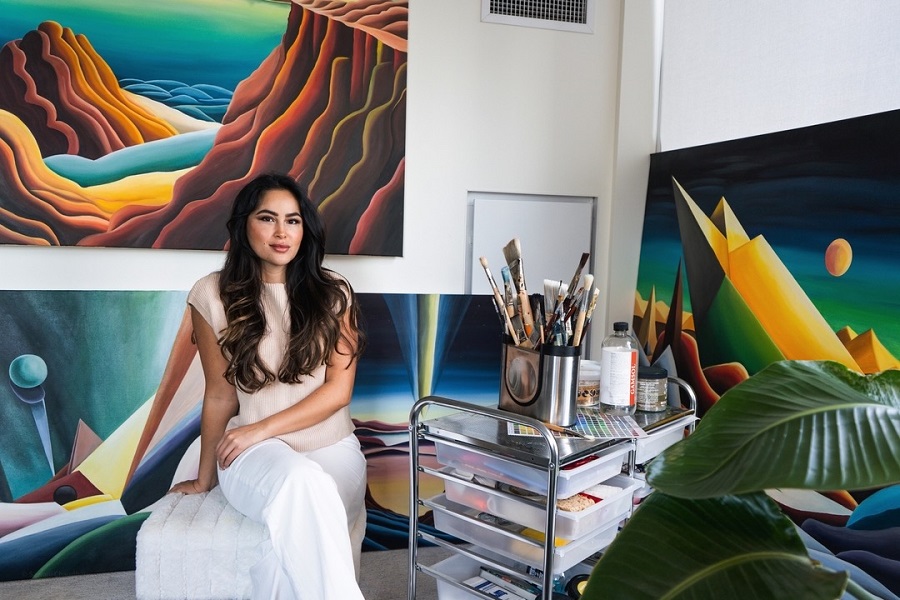
She also has a special connection with the Philippines, which she visited every summer when growing up. “I’d see my mother’s side of the family and my cousins. The people are so kind-hearted. We would go to the islands there, like Boracay and Palawan. They’re absolutely stunning,” she says. “I think I try to bring those influences into my work, especially the tribal communities there. For example, in ceremonies, they’re very into face painting primitive shapes that symbolize different things.”
Those childhood memories have seeped into the bold utopian landscape imagery that Moumina started creating in 2019.
“We have volcanoes and beautiful islands in the Philippines. I think growing up around those extreme and contrasting landscapes led me to amalgamate them into my work, because the meandering, like, rivers and labyrinthine terrains there are unlike any other place, in my opinion — contrasting with the desert landscapes in Saudi Arabia,” she explains.
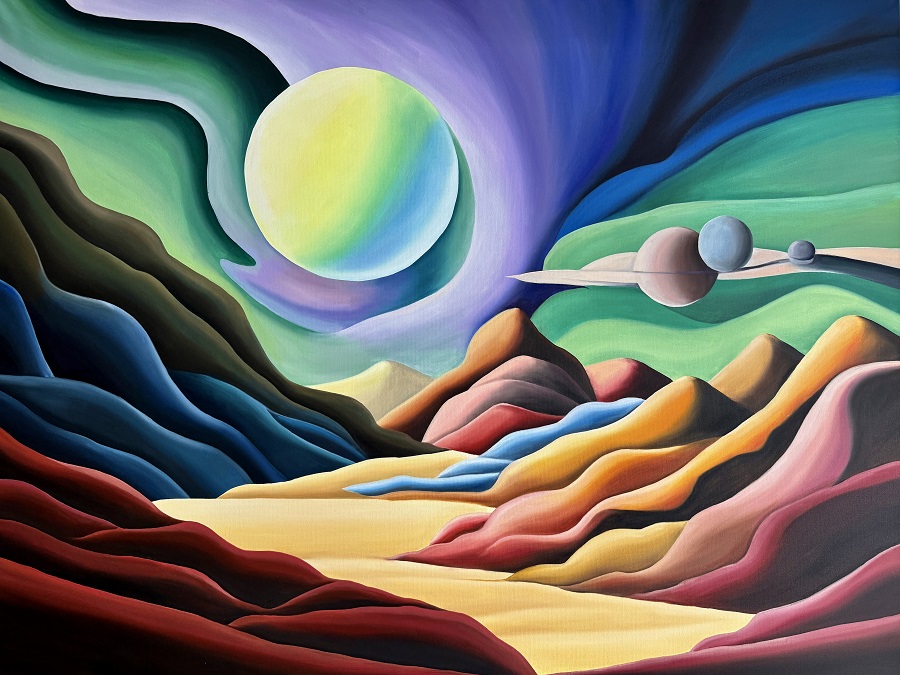
Although she doesn’t come from an artistic family, Moumina always found herself making collages, scrapbooking and drawing.
“I’ve been painting my whole life. I never took it seriously, but I think it was always an innate part of me,” she says. She also had an aunt who drew and she encouraged her niece. During high school, Moumina took art classes and actually sold her first artwork at a school exhibition.
She later attended the University of Virginia to study business, technology and psychology (along with a few art classes). It was while in Virginia that she discovered the work of American master Georgia O’Keeffe, who famously depicted America’s sweeping mountainous landscapes.
“She used to teach at my university, and she’s such a big inspiration in my work,” says Moumina. “I would say that our styles are similar, but, obviously, I’m trying to distinguish myself.”
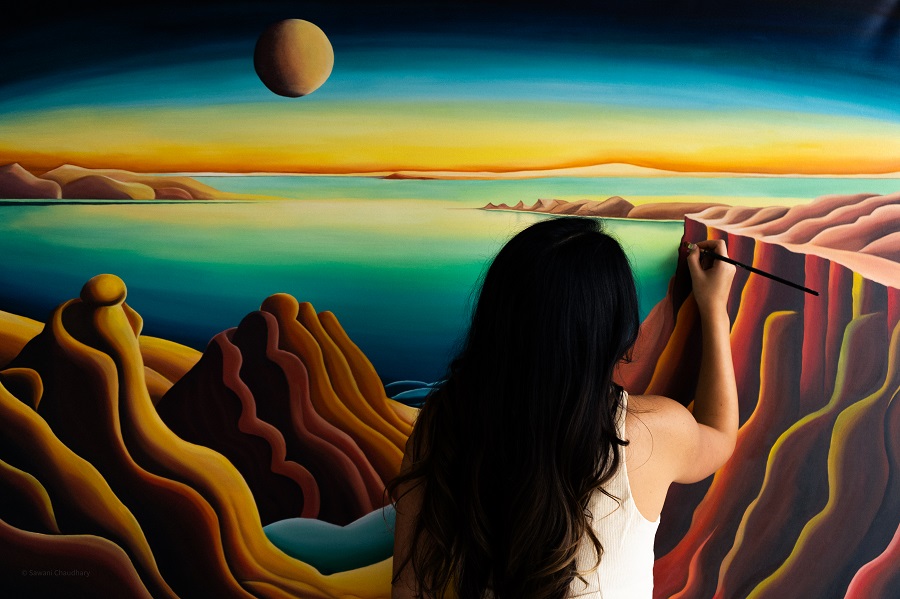
In 2019, Moumina graduated, but a few months later the COVID-19 pandemic hit. She started painting again during lockdowns.
“I really missed traveling, so I was thinking of the landscapes and the ocean from Saudi and the feeling of being by the beach,” she says. “I’ve always loved using oil paint, because it’s slow-drying and the colors are so rich. It’s very therapeutic and relaxing. Sometimes, I’ll play melodic music, other times I’ll work in silence. Whenever I start painting, I just go into a flow state of mind and work for hours — forgetting to eat. You don’t even realize it.”
Moumina’s arresting landscapes feel otherworldly, isolated and fantasy-like. At times, a large yellow sun dominates the composition, above wave-like mountains and flowing rivers. Inspired by cubism and surrealism, Moumina executes her paintings in three-dimensions, with sharp contrasts and bold colors.
“Each piece, I’d say, has a distinctive energy and character,” she says. “I don’t want people to just look at the work, I want them to feel something and walk away thinking about it more, and thinking something new. I try to lure people in through the energizing presence of fresh possibilities. . . I hope people see, through my work, that everything is simply interconnected and interactive.”

Along with the vivid colors and energy in Moumina’s work, there is also a sense of somberness. “There’s so much happening in the world,” she says. “I think of my grandmother, who was Palestinian. She was evicted from her home back in the Forties, and I made a painting that was inspired by her. Because I live all the way in New York, it’s kind of hard to keep in touch with what’s happening in the Middle East.”
Moumina has been living in New York — which she describes as “the art capital of the world” — for two years, and she is represented by GR Gallery. On May 3, a group show, “Transfiguration,” opened at the gallery. The show includes a selection of Moumina’s nature pieces. She says that being an artist in a well-established art scene like New York is competitive, and that she has considered doing a Master’s degree in art, but she realized that she needed something more in order to succeed.
“What helps you in this industry is networking and not staying in your studio 24/7,” says Moumina, who describes herself as sociable and extroverted. “Half of it is also connecting with other artists and really putting yourself out there.”
She also believes that being both Saudi and a woman has been an advantage so far in her career. “I think it’s still a male-dominated field,” she says. “But a lot of gallery owners are trying to bring up more female artists, because that’s what’s kind of in demand nowadays.”
Qatar highlights Arab, South Asian and African films at the Venice Biennale
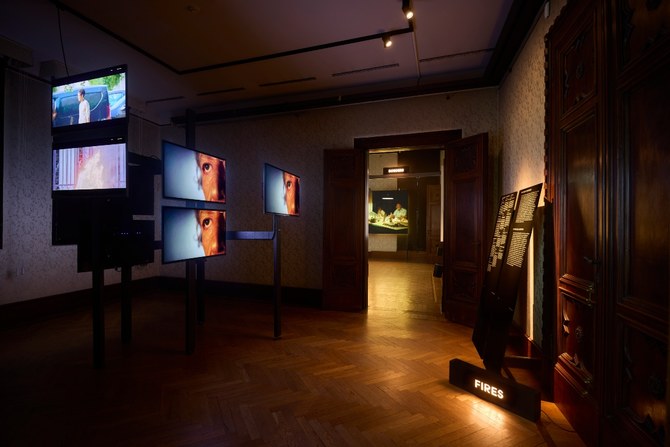
- Highlights include Ali Cherri’s “The Dam” (2022), charting the story of a Darfuri seasonal worker from Sudan
VENICE: For its second showing during the Venice Biennale, Qatar is staging the exhibition “Your Ghosts Are Mine: Expanded Cinemas, Amplified Voices” that takes a profound, in-depth look at the last decade of film and video art by Arab, South Asian and African filmmakers.
While Qatar has yet to have its own national pavilion, its exhibition occupies the 459-year-old Palazzo Cavalli-Franchetti on the Grand Canal. The works on show are drawn from the collections of Mathaf: Arab Museum of Contemporary Art, the Doha Film Institute and the forthcoming Art Mill Museum (scheduled to open in 2030). It is divided into ten galleries, each comprising films and video art according to a specific theme such as ruins, women’s voices, borders, exile and deserts and is curated by Paris-based Matthieu Orlean, a film and video expert. The exhibition will run until November 2024.
“Film is very relevant to our institutions and is an important part of our collections,” Zeina Arida, Director of Mathaf: Arab Museum of Modern Arab Art in Doha, told Arab News.
“It is a great way to document our contemporary times,” she added. “Film is also a great way of to share who we are and what we are going through, what we as societies from these less represented countries are living and the issues we are facing.”

In-depth storytelling can be found in the films on view by Shirin Neshat and Shoja Azari, Larissa Sansour, Fares Fayyad, Ali Cherri, Shaima Al-Tamimi, Ramata-Toulaye Sy, Hassan Khan and Sophia Al-Maria, among others.
In a documentary and largely journalistic style, many of the works shed light on current events and issues not often covered in mainstream media, including the now one-year old conflict in Sudan or migrants seeking new homes such as those captured in the film by Yemeni East African filmmaker Shaima Al-Tamini who charted the journey of her family from Kenya and Zanibar to the UAE.

“I was looking at movies that were different from the rest — that take a risk of telling their own story in a specific way,” curator Orlean told Arab News. “The filmmakers of these films are foreigners in their own environment because they are capturing events, whether personal or collective, that many people don’t see even in the news. Many deal with the themes of migration, social differences and exile.”
The works on view showcase both long and short films. A few highlights include Ali Cherri’s “The Dam” (2022), charting the story of a Darfuri seasonal worker from Sudan who works during the night to create a mud-brick monument. The film is a political fable that tells of the power of imagination against the backdrop of the Sudanese revolution. There is also Qatari artist Sophia Al-Maria’s well-known work “Black Friday” (2016) and British-born Egyptian multimedia artist Hassan Khan’s “Jewel” (2010) featuring a luminescent fish in dark waters followed by two men dancing to Arabic music.
“‘Jewel’ was triggered by a moment witnessed on the street in Cairo in 2006 — two men dancing around a speaker with raw, brutal and beautiful music blaring out,” Khan told Arab News. “It took four years before I could finally produce the work for Mathaf's opening exhibition in 2010 and by then so much was bubbling around us that it seemed to channel something real. Imagine a one second flickering daydream slowed down and stretched into six intense minutes. It is about our deepest sources — history, culture, emotion — and how we communicate the alien that lives inside all of us.”



